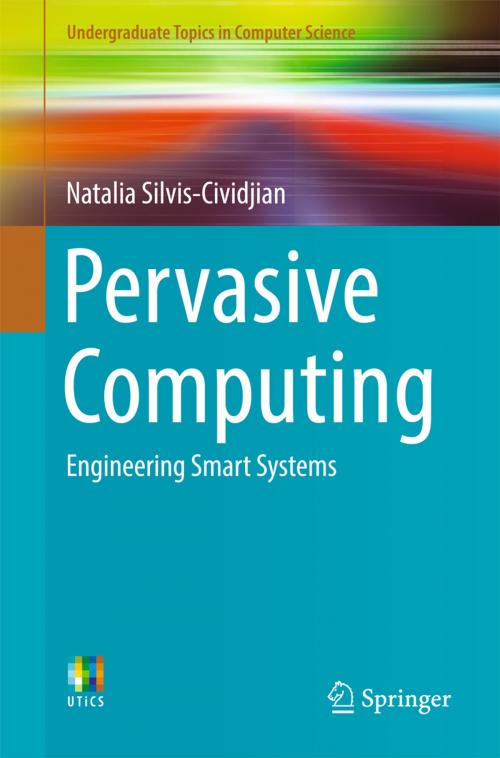Pervasive Computing
Engineering Smart Systems
Nonfiction, Computers, Advanced Computing, Engineering, Computer Vision, Artificial Intelligence, General Computing| Author: | Natalia Silvis-Cividjian | ISBN: | 9783319516554 |
| Publisher: | Springer International Publishing | Publication: | February 15, 2017 |
| Imprint: | Springer | Language: | English |
| Author: | Natalia Silvis-Cividjian |
| ISBN: | 9783319516554 |
| Publisher: | Springer International Publishing |
| Publication: | February 15, 2017 |
| Imprint: | Springer |
| Language: | English |
This book provides a concise introduction to Pervasive Computing, otherwise known as Internet of Things (IoT) and Ubiquitous Computing (Ubicomp) which addresses the seamless integration of computing systems within everyday objects. By introducing the core topics and exploring assistive pervasive systems which infer their context through pattern recognition, the author provides readers with a gentle yet robust foundation of knowledge to this growing field of research.
The author explores a range of topics including data acquisition, signal processing, control theory, machine learning and system engineering explaining, with the use of simple mathematical concepts, the core principles underlying pervasive computing systems. Real-life examples are applied throughout, including self-driving cars, automatic insulin pumps, smart homes, and social robotic companions, with each chapter accompanied by a set of exercises for the reader. Practical tutorials are also available to guide enthusiastic readers through the process of building a smart system using cameras, microphones and robotic kits. Due to the power of MATLAB™, this can be achieved with no previous programming or robotics experience.
Although Pervasive Computing is primarily for undergraduate students, the book is accessible to a wider audience of researchers and designers who are interested in exploring pervasive computing further.
This book provides a concise introduction to Pervasive Computing, otherwise known as Internet of Things (IoT) and Ubiquitous Computing (Ubicomp) which addresses the seamless integration of computing systems within everyday objects. By introducing the core topics and exploring assistive pervasive systems which infer their context through pattern recognition, the author provides readers with a gentle yet robust foundation of knowledge to this growing field of research.
The author explores a range of topics including data acquisition, signal processing, control theory, machine learning and system engineering explaining, with the use of simple mathematical concepts, the core principles underlying pervasive computing systems. Real-life examples are applied throughout, including self-driving cars, automatic insulin pumps, smart homes, and social robotic companions, with each chapter accompanied by a set of exercises for the reader. Practical tutorials are also available to guide enthusiastic readers through the process of building a smart system using cameras, microphones and robotic kits. Due to the power of MATLAB™, this can be achieved with no previous programming or robotics experience.
Although Pervasive Computing is primarily for undergraduate students, the book is accessible to a wider audience of researchers and designers who are interested in exploring pervasive computing further.















